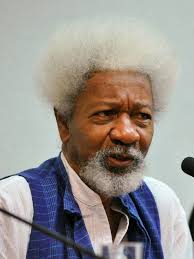As a researcher at the Swedish School of Sport and Health Sciences, Filip Larsen would hear anecdotes about the downsides of too much exercise—a common enough phenomenon that nevertheless puzzled him. “All athletes know if you train too much, something’s happening. . . . Your legs feel terrible after a while, and then if you just continue, you have these psychological disturbances too, like mood disturbances,” he says. “That hasn’t been really described in the literature—no one knows exactly what’s going on.”
To find out, Larsen and his colleagues recruited 11 healthy young people and put them through a four-week, increasingly intense regimen of sessions on a stationary bike while monitoring their glucose tolerance and mitochondrial function. During the toughest week, the subjects displayed insulin resistance and other deleterious metabolic changes, the team reported last week (March 18) in Cell Metabolism.
“It’s a very impressive study,” says Thijs Eijsvogels, an exercise physiology researcher at Radboud University Medical Center who was not involved in the work. Typically, cardio-metabolic health improves with greater exercise volumes, and the results indicate that there’s a point at which those benefits stop accruing, he notes.
Indeed, the subjects’ mitochondria—collected via muscle biopsies—did show improved capacity during the first two weeks of the workout schedule. During the high-intensity interval training, or HIIT, subjects warmed up, and then were asked to maximize their power output over either 4- or 8-minute intervals, interspersed with 3-minute breaks. The training started out relatively light, with 36 total minutes of high-intensity intervals, spread out over the week, not including warm-up or rest times. In the following, moderate week, subjects completed 90 total minutes of intervals. Among other findings, the researchers determined that a measure of metabolic efficiency known as intrinsic mitochondrial respiration improved over that time, as did physiological parameters such as oxygen consumption.
That changed in the third week, designed to represent excessive training, during which the participants completed a grueling 152 minutes of intervals over the course of the week. After that, the subjects’ intrinsic mitochondrial respiration fell by an average of 40 percent compared with the samples taken at the end of the moderate-intensity week, the researchers report.
It’s quite similar to the changes that you see in people that are starting to develop diabetes or insulin resistance.—Filip Larsen, Swedish School of Sport and Health Sciences
Furthermore, the subjects’ glucose tolerance—measured by their glucose levels before and after they consumed a sweet drink—also dropped between the light-training week and the end of the excessive-training week (no oral glucose test was performed after the moderate training week). “It’s quite similar to the changes that you see in people that are starting to develop diabetes or insulin resistance,” Larsen says.
After a recovery period, during which participants completed 53 minutes of intervals spread across the week, most measures rebounded. The subjects’ oxygen consumption and power output during exercise, as measured by how hard they pedaled, were higher after recovery than at baseline or at any other point during the experiment, for example. Intrinsic mitochondrial respiration had not fully recovered by the end of the experiment, though, remaining 25 percent lower after recovery than it had been after the moderate week.

In a second component of the experiment, the researchers monitored blood glucose levels in 15 elite athletes who weren’t subject to any intervention and in matched, non-athlete controls. On average, the two groups’ levels over a given 24-hour period were about the same, but the athletes spent more time with glucose levels either above or below the normal range, the team reports. Eijsvogels cites the alignment of the in vitro measurements the team made on the experimental subjects’ biopsies with this observational result as one of the study’s strengths. “I think joining together those findings gives a really strong message of the impact of exercise training on glucose tolerance,” he says.
See “Metabolism Hits a Ceiling in Athletic Endurance Feats”
Although the study didn’t examine what, if any, long-term health consequences might arise from excessive exercise, Larsen sees the findings’ implications as chiefly academic. After all, elite athletes tend to be a “really healthy” bunch, he says, and furthermore, getting too little exercise is a far more common problem than is getting too much.
Brent Ruby, an exercise researcher at the University of Montana, calls the study “incredibly well-designed,” but he questions whether the levels of exercise in the study’s third week are applicable to anyone in real life. “Even the most narcissistic exercise addicts would not likely put themselves in this situation,” he says.
Linda Pescatello, who studies the health effects of exercise at the University of Connecticut and was not involved in the study, says she suspects the findings about the effects of overexercise do indeed have real-life ramifications, with individuals having different thresholds for overexercise depending on their fitness levels. “These extreme forms of exercise in this article are not applicable to the general recreational exerciser, but I think the overarching principles about training are,” she says.
She points to a 2020 review article, coauthored by Eijsvogels, that found associations between very high levels of exercise and what the authors called “potential cardiac maladaptations” such as coronary artery calcification. “I guess the bottom line is, especially for the average person, all in moderation if you want to maximize the health benefits” of exercise, she says.
Study coauthor Mikael Flockhart, also at the Swedish School of Sport and Health Sciences, says that it’s not clear where the “tolerable limit of training” is, especially because the study indicates that overexercise doesn’t necessarily lead to a decline in actual athletic performance. Knowing where that limit is, he says, would be helpful to athletes and their coaches.














